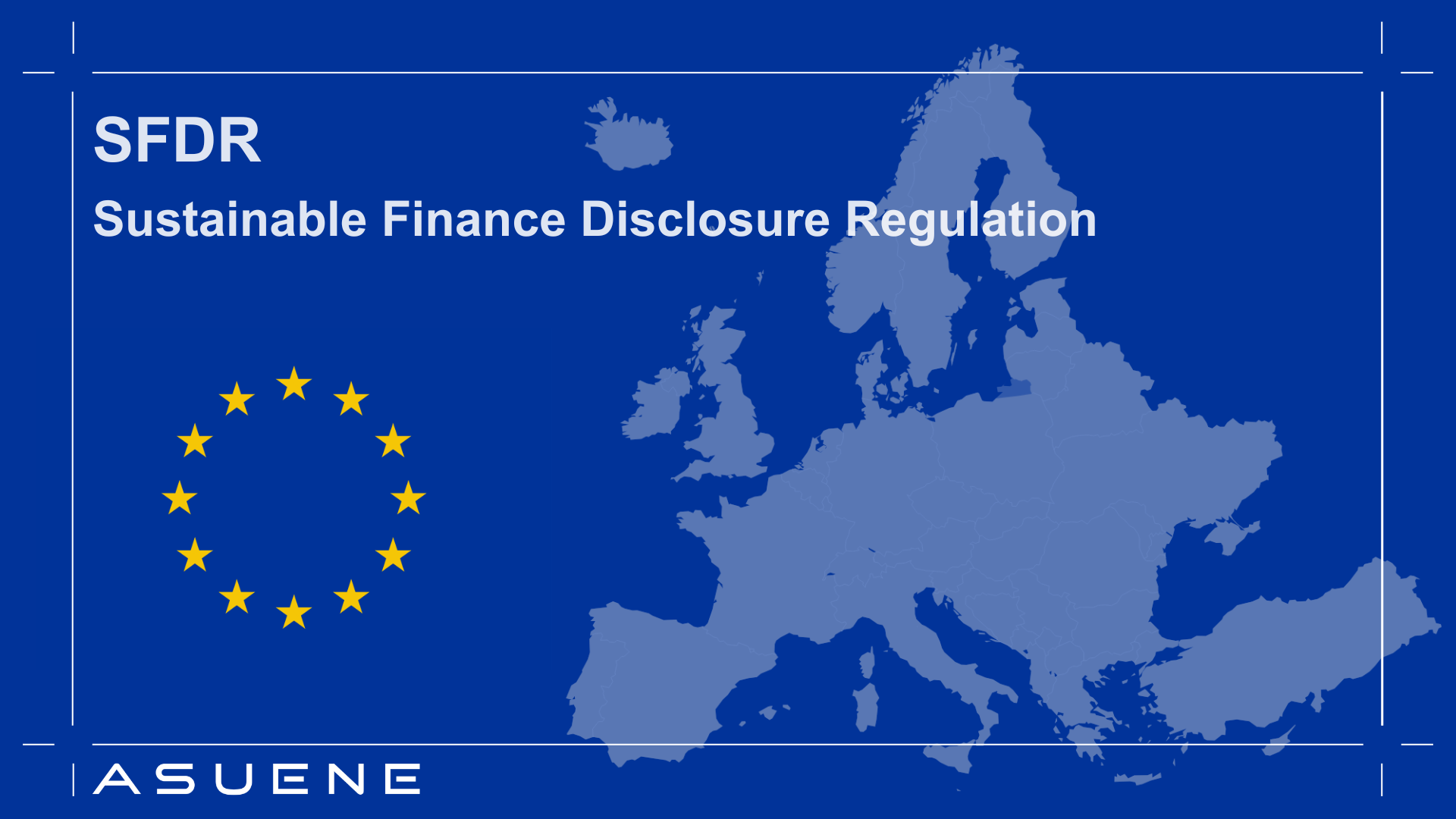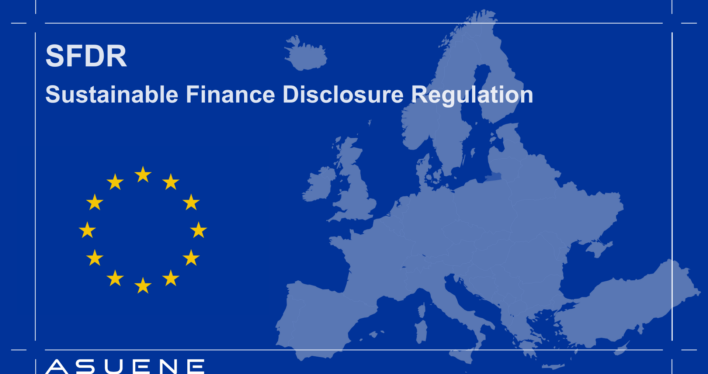- Article Summary
-

The European Union (EU) continues to lead the way in promoting sustainability, and the Sustainable Finance Disclosure Regulation (SFDR) is a cornerstone of this effort. Designed to enhance transparency in the financial services sector, the SFDR aims to combat greenwashing, empower investors, and drive capital toward sustainable investments. For professionals and stakeholders in Environmental, Social, and Governance (ESG) domains, understanding the SFDR is crucial for navigating the evolving landscape of sustainable finance.
What is the SFDR?
The SFDR is a regulation introduced by the EU to establish clear and standardized disclosure requirements for financial market participants (FMPs) and financial advisers. It focuses on ensuring that sustainability-related information is accessible, reliable, and comparable, enabling investors to make informed decisions.
The SFDR came into effect on March 10, 2021, and the more detailed Regulatory Technical Standards (RTS), specifying how disclosures should be made, became mandatory on January 1, 2023.
| Objective | Description |
| EnhanceTranspareny | Provide clear insights into how financial entities incorporate sustainability risks and impacts into their operations and decision-making. |
| CombatGreenwashing | Prevent misleading claims about the sustainability of financial products. |
| PromoteSustainableInvestment | Encourage investments that contribute to environmental and social goals, aligning financial flows with the EU’s Green Deal objectives. |
Key Features of the SFDR
1. Comprehensive Disclosure Requirements to Build Trust
SFDR mandates financial entities to disclose sustainability-related information at three levels, ensuring investors have access to critical insights.
Entity-Level Disclosures
Financial institutions must outline how they integrate sustainability risks into their decision-making processes and assess the potential impact of these risks on financial returns.
Product-Level Disclosures
Financial products are categorized into three distinct groups, with varying levels of disclosure requirements:
| Article | Category | Description |
| Article 6 | Standad Products | Products that consider sustainability risks but do not pursue specific ESG objectives. |
| Article 8 | “Light Green” Products | Products that promote environmental or social characteristics. |
| Article 9 | “Dark Green” Products | Products aimed at achieving sustainable investment goals. |
For Article 8 and 9 products, detailed explanations are required to show how ESG objectives are achieved.
2. Addressing Principal Adverse Impacts (PAIs) for Greater Accountability
SFDR requires financial entities to evaluate and disclose the Principal Adverse Impacts (PAIs) of their investment decisions on sustainability factors. These impacts are measured using indicators such as:
- Greenhouse gas emissions
- Biodiversity loss
- Labor rights violations
By reporting PAIs, institutions demonstrate accountability for the broader environmental and social impacts of their activities.
3. Enhanced Transparency Through Websites and Pre-Contractual Documents
Transparency is at the heart of the SFDR, with clear guidelines for public communication:
- Website Disclosures: Entities must publish their sustainability policies and disclosures online, making them accessible to all stakeholders.
- Pre-Contractual Documentation: Before making investment decisions, investors must be informed about how sustainability risks and their potential impacts are considered.
Opportunities and Challenges
The implementation of the Sustainable Finance Disclosure Regulation (SFDR) brings both challenges and opportunities for financial institutions. On one hand, it demands detailed reporting requirements, necessitates system upgrades, and requires adaptability to navigate evolving regulatory changes. On the other hand, it creates significant opportunities to build investor trust through transparency, establish leadership in ESG markets, and drive meaningful environmental and social impact by aligning investments with sustainability goals.
Why the SFDR Matters
The SFDR is more than a regulatory requirement; it is a catalyst for change in the financial sector. By setting a high bar for transparency and accountability, it drives the shift toward responsible investment practices and aligns financial flows with the EU’s sustainability objectives. For investors, it provides the clarity needed to make informed decisions that align with their values.
Empower Your Business to Lead with Asuene’s SFDR Compliance Solutions
The Sustainable Finance Disclosure Regulation (SFDR) is a cornerstone of the EU’s efforts to promote transparency in sustainable investments and prevent greenwashing. For financial market participants and advisors, meeting the SFDR requirements involves more than just compliance—it’s an opportunity to demonstrate leadership in sustainability and attract eco-conscious investors.
Navigating SFDR compliance can be complex, but with the right tools and support, your business can thrive in the evolving landscape of sustainable finance. That’s where ASUENE Europe comes in.
As the European branch of Asuene Inc., a global leader in Climate Tech, ASUENE Europe provides innovative solutions that simplify the compliance process while helping businesses showcase their commitment to sustainability. From ESG data management to portfolio impact assessments, we help you meet SFDR requirements while driving meaningful environmental change.
How ASUENE Can Help Your Business
- ESG Data Collection and Reporting: Automate the collection and reporting of key ESG metrics required under SFDR, including principal adverse impacts (PAIs) and sustainable investment objectives.
- Portfolio Carbon Footprint Analysis: Measure and disclose the carbon footprint of your investment portfolios, ensuring alignment with SFDR Article 8 and Article 9 requirements.
- SFDR Reporting Support: Gain tailored guidance on regulatory disclosures, including pre-contractual, periodic, and website transparency requirements.
- Risk and Impact Assessment: Identify and mitigate sustainability risks across your financial products while enhancing their positive impact.
Why Partner with ASUENE?
- Comprehensive SFDR Compliance Tools: From data automation to portfolio analysis, we provide a full suite of solutions tailored to the SFDR framework.
- Proven Expertise: Trusted by over 10,000 clients globally, we bring extensive experience in sustainability reporting and carbon management.
- Efficiency and Accuracy: Reduce the time and cost of compliance with streamlined processes and accurate, actionable insights.
By leveraging ASUENE’s expertise and innovative tools, your business can seamlessly align with SFDR requirements, enhance transparency, and solidify your position as a leader in sustainable finance.
Prepare for the Future of Sustainable Finance
Visit our website to learn how ASUENE can help you navigate the SFDR. Whether you need support with ESG data management, carbon footprint analysis, or regulatory disclosures, we provide tailored solutions to meet your needs. Contact us today for a personalized consultation and take the next step in advancing your sustainability goals.
